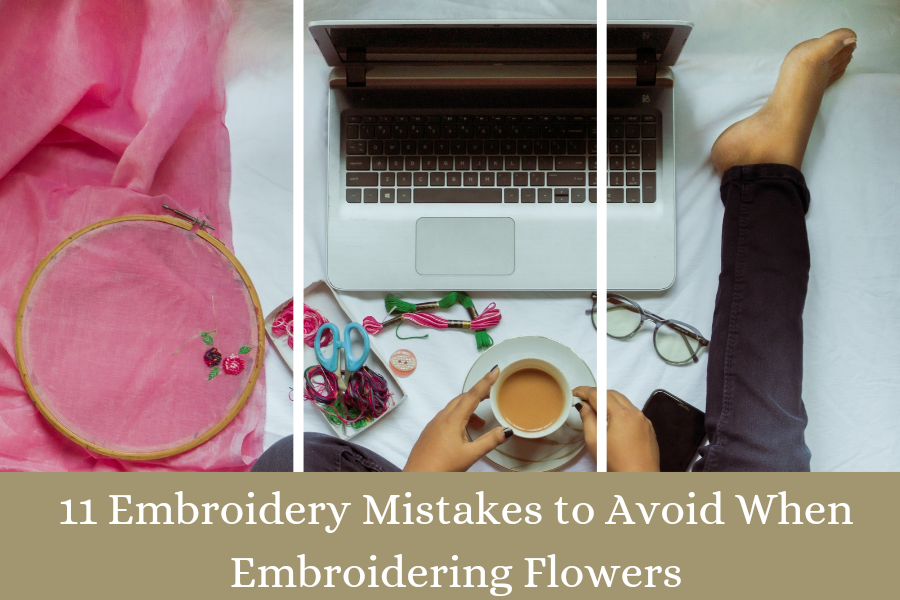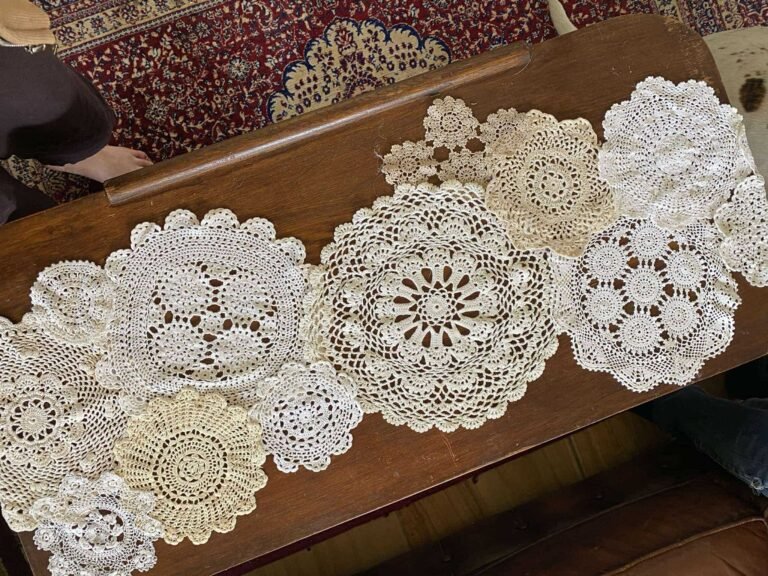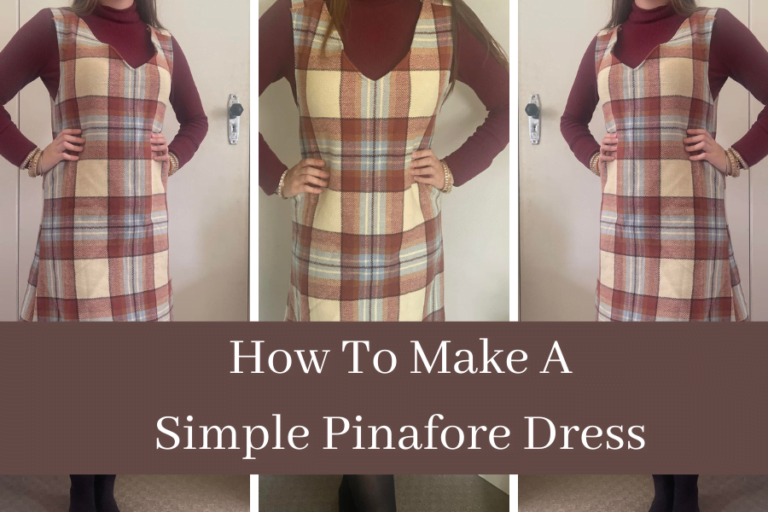Blooming Blunders: 11 Embroidery Mistakes to Avoid When Embroidering Flowers
Embroidering flowers is a delightful way to add vibrant life to your projects. Whether you’re creating delicate blooms or bold statement pieces, there’s a floral embroidery style for everyone. However, even experienced embroiderers can fall into common traps that can diminish the beauty of their creations. To help you avoid these pitfalls and achieve stunning results, we’ve compiled a list of 11 embroidery mistakes to steer clear of.

1. Using the wrong thread:
Imagine trying to embroider a delicate rose with thick, chunky wool thread. The result will be a stiff, unnatural-looking bloom. Instead, choose fine silk or cotton threads for delicate petals, while wool or metallic threads can add dimension to bolder flowers like sunflowers or peonies.
2. Not using a hoop:
Embroidering without a hoop can lead to puckering and uneven stitches, especially when working with delicate fabrics. Imagine trying to embroider a delicate forget-me-not on a loose piece of linen – the fabric will shift and distort your stitches. A hoop provides stability and tension, ensuring a smooth and even surface for your embroidery.
3. Pulling the thread too tight:
Tight stitches can distort the fabric and make your embroidery look stiff. Imagine a daisy with petals that are pulled so tightly they look like they’re about to snap. Aim for consistent tension and a smooth, even flow of thread to create natural-looking petals that gently curve and overlap.
4. Not using a needle appropriate for your thread:
A blunt needle will damage your thread and fabric, resulting in frayed threads and uneven stitches. Imagine trying to embroider a delicate lily with a blunt needle – the thread will snag and break, leaving you with a messy and frustrating experience. Use a sharp needle that’s the right size for your chosen thread weight to ensure smooth, even stitches.
5. Not using a stitch guide:
Embroidery stitch guides help you achieve consistent stitch size and spacing, resulting in a neater and more professional finish. Imagine a field of poppies with unevenly sized petals – it can look messy and unprofessional. Using a stitch guide ensures that your stitches are uniform and create a polished, beautiful effect.
6. Forgetting to backstitch:
Backstitching secures your stitches at the beginning and end, preventing them from unraveling. Imagine a beautiful sunflower with petals that are unraveling at the edges – it can ruin the overall look of your embroidery. Backstitching ensures that your stitches are securely anchored, preventing them from coming loose and preserving the integrity of your design.
7. Not using enough layers of thread:
Multiple layers of thread create depth and dimension in your flowers. Imagine a simple, flat-looking rose – it lacks the depth and realism of a multi-layered bloom. Experiment with different layering techniques to achieve your desired effect and create flowers that appear three-dimensional and lifelike.
8. Ignoring the direction of the petals:
Embroider petals in the direction they naturally grow to create a more realistic and flowing look. Imagine a sunflower with petals that are all pointing in the same direction – it looks unnatural and stiff. By following the natural growth pattern of petals, you create a more organic and dynamic effect.
9. Skipping the leaves:
Leaves provide balance and context for your flowers. Don’t neglect them! Use a variety of stitches and thread colors to create interesting textures and details. Imagine a beautiful rose without any leaves – it looks incomplete and lacks the natural beauty of a complete flower. Adding leaves adds depth and dimension to your embroidery, creating a more balanced and visually appealing composition.
10. Not adding shading:
Shading adds depth and realism to your flowers. Use different shades of thread to create subtle highlights and shadows. Imagine a flat, lifeless-looking flower – it lacks the dimension and vibrancy of a shaded bloom. Using different shades of thread to create highlights and shadows adds depth and realism, making your flowers appear more lifelike and captivating.
11. Not experimenting:
Don’t be afraid to try new stitches, colors, and techniques. Experimenting is the key to finding your own unique style and creating beautiful, one-of-a-kind embroidered flowers. Imagine sticking to the same old stitches and colors – your embroidery will become predictable and lack a sense of personal style.

Experimenting with different stitches, colors, and techniques allows you to express your creativity and create unique and beautiful floral embroidery masterpieces. By avoiding these common mistakes and embracing the joy of experimentation, you can create stunning floral embroidery masterpieces that will bloom with beauty and delight for years to come.





